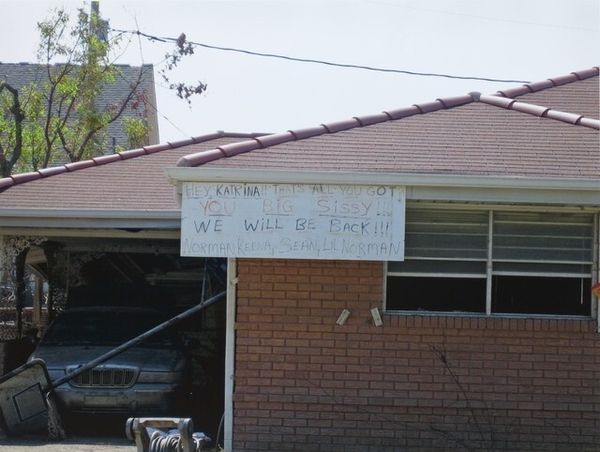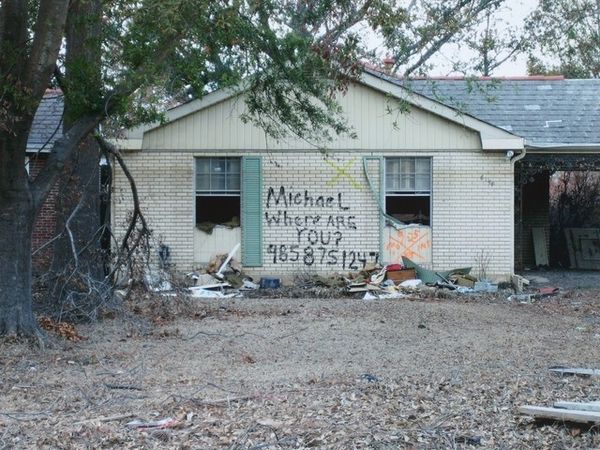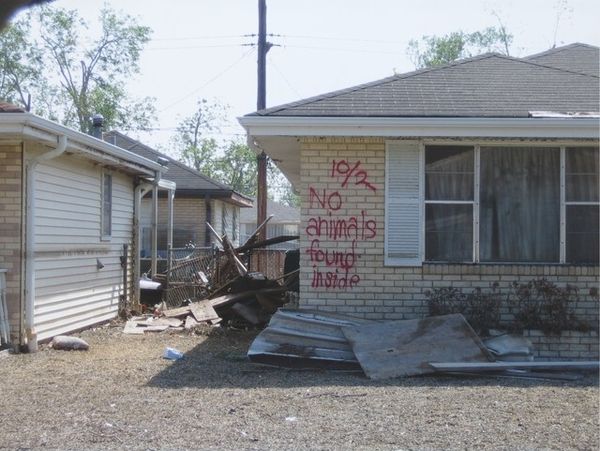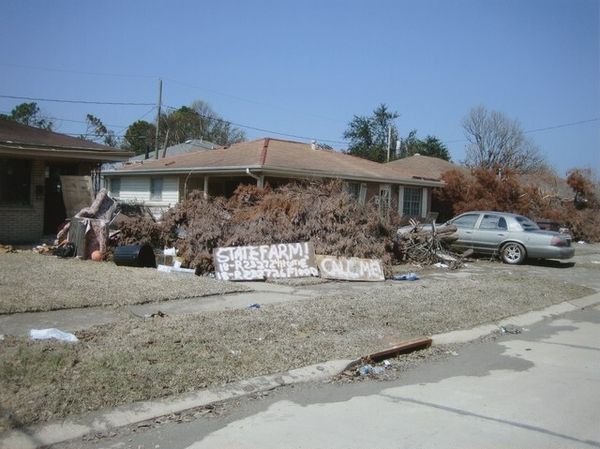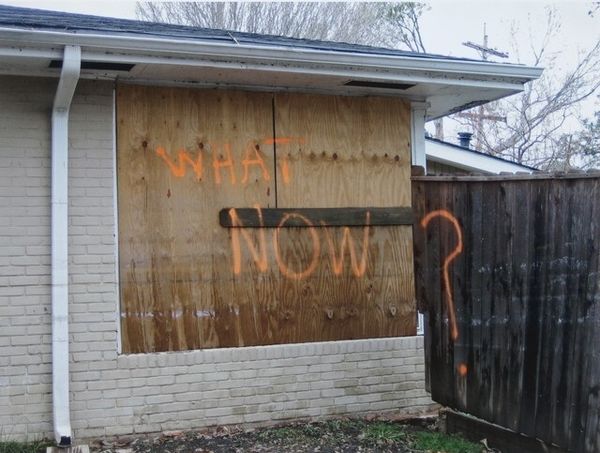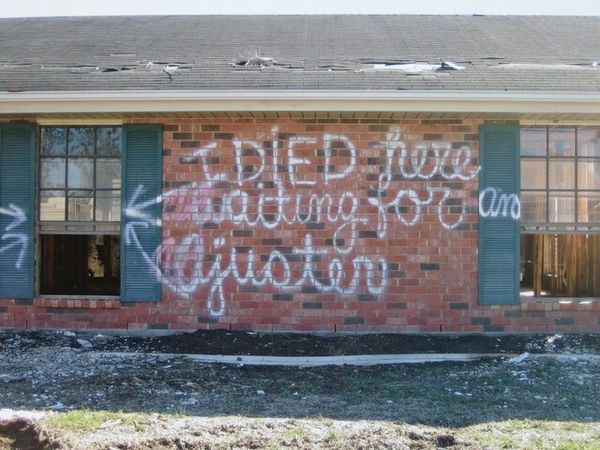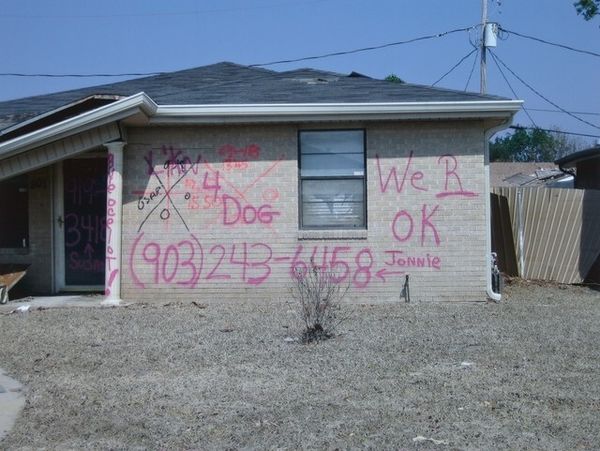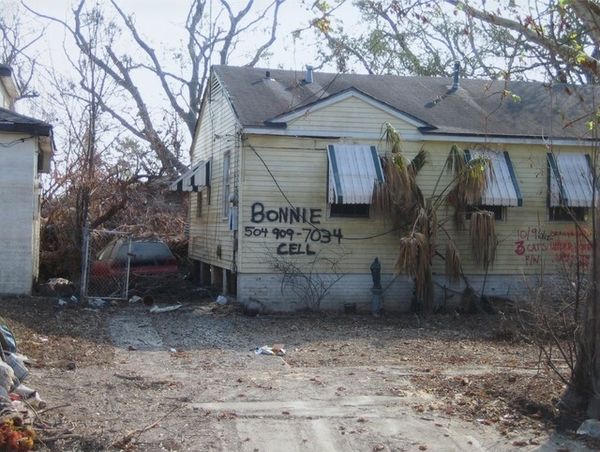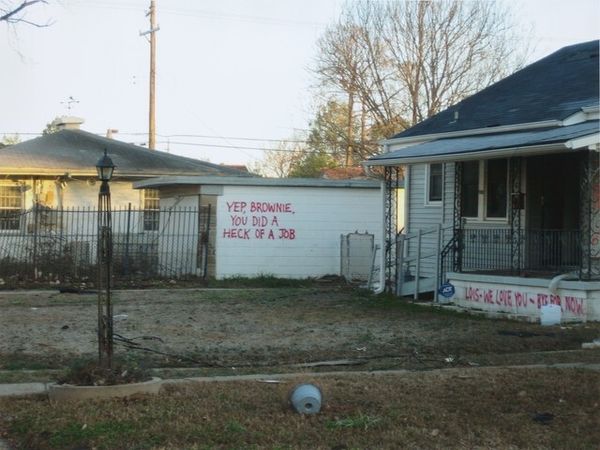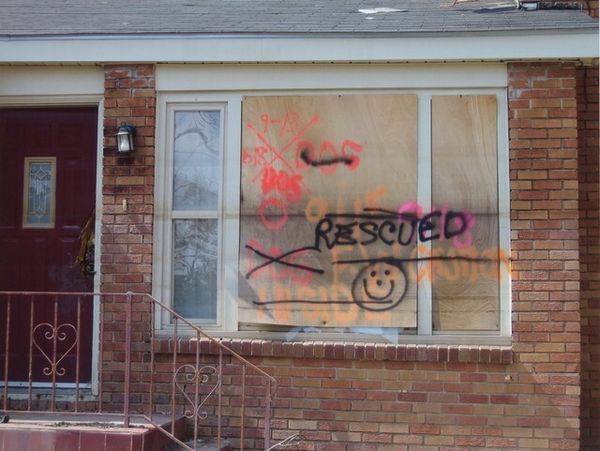![Untitled [New Orleans and the Gulf Coast, 2005] by Richard Misrach](/_next/image?url=https%3A%2F%2Fd2w8kbdekdi1gv.cloudfront.net%2FeyJidWNrZXQiOiAiYXJ0ZXJhLWltYWdlcy1idWNrZXQiLCAia2V5IjogImFydHdvcmtzLzI0MGQ0MmEzLTI5ZDAtNGZhYS05YmUzLWRiOWRlNTUzM2UwZi8yNDBkNDJhMy0yOWQwLTRmYWEtOWJlMy1kYjlkZTU1MzNlMGZfZnVsbC5qcGciLCAiZWRpdHMiOiB7InJlc2l6ZSI6IHsid2lkdGgiOiAxOTIwLCAiaGVpZ2h0IjogMTkyMCwgImZpdCI6ICJpbnNpZGUifX19&w=1920&q=75)
Untitled [New Orleans and the Gulf Coast, 2005] Possibly 2005 - 2010
0:00
0:00
#
graffiti
#
urban
#
street art
#
urban advertising
#
street graffiti
#
urban life
#
urban art
#
tagging
#
text in urban environment
#
urban photography
Dimensions: image: 27.62 x 36.83 cm (10 7/8 x 14 1/2 in.) sheet: 28.89 x 38.1 cm (11 3/8 x 15 in.)
Copyright: National Gallery of Art: CC0 1.0
Curator: This photograph, titled "Untitled [New Orleans and the Gulf Coast, 2005]," is attributed to Richard Misrach and thought to have been created between 2005 and 2010. It’s quite striking, isn’t it? My first impression is one of desolation. The graffiti really jumps out against the rather mundane brick of the house. Editor: It's incredibly stark. You've got this typical suburban American house as a backdrop, then jarringly superimposed are these layers of unauthorized text – what reads like a declaration of love alongside potentially critical tags? It hints at conflicting narratives and raises so many questions about the people, social realities, and historical forces in play. Curator: Exactly! The materiality here is so compelling. The spray paint on brick transforms this domestic structure into a canvas. It shifts the house from a manufactured product into a site of expression and contestation, a ground for both personal feelings and communal discourse. What does it mean to use the exterior of someone’s property as the site of public, even romantic, messaging? Editor: The fact that Misrach photographed this scene within five years of Hurricane Katrina is critical, though. Disaster capitalism profits by preying on the most vulnerable populations to rebuild – often not for them, and often elsewhere. These spray painted words become silent cries against a system that prioritizes capital over human life. We should ask what sort of forced movement of people preceded, allowed for, or caused the sentiments to surface? What new modes of existence arise amidst a slowly unravelling society? Curator: I hadn’t considered it specifically in that frame. I was stuck on the notion of urban space as an open canvas available for artistic or, well, non-artistic intervention by inhabitants. The use of simple, accessible materials to claim space and narrate a lived reality... It really begs the question of who controls the means of representation. Editor: It goes deeper, I think. Post-Katrina New Orleans was – and remains – a hyper-visible site of socio-economic disparities laid bare. These materials used in these ways aren't just artistic statements, they are also political gestures, reflecting complex, marginalized experiences that resist erasure. Curator: Seeing the interaction from those distinct points of view truly broadens my interpretation, thanks for elucidating how deeply historical context shapes every act. Editor: It only underscores the power of situating artistic practice at the center of our analysis – recognizing that acts of marking, especially in public, contested spaces, carry the weight of historical burdens.
Comments
No comments
Be the first to comment and join the conversation on the ultimate creative platform.
